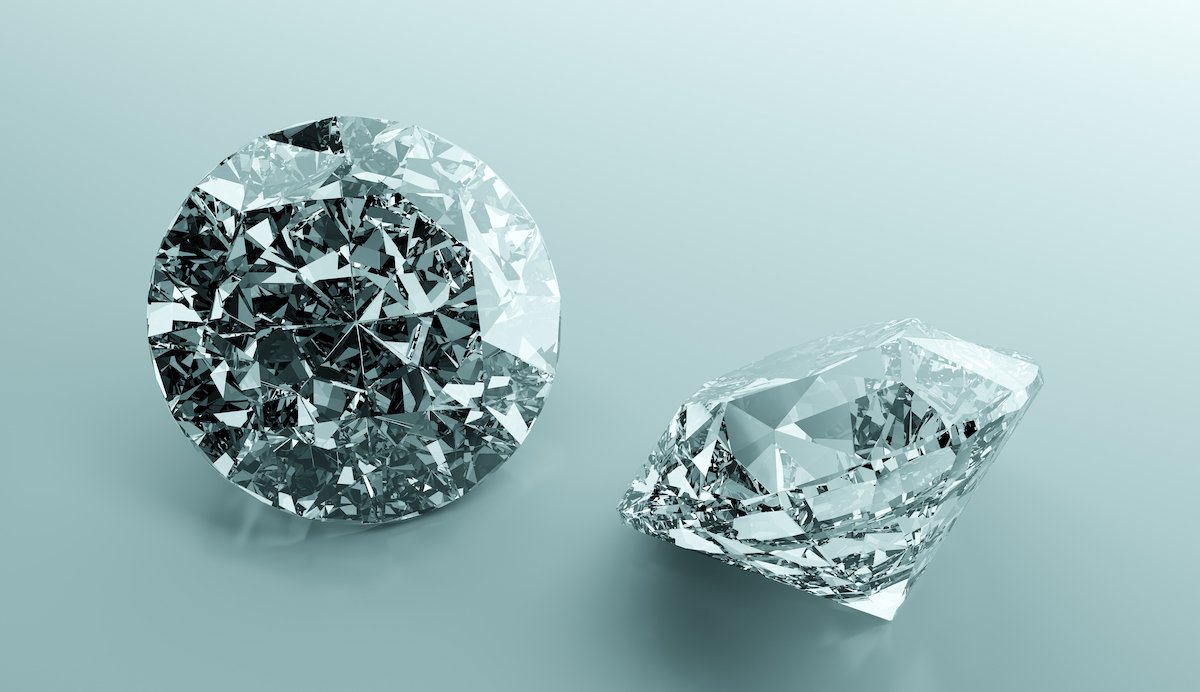Jewelry - The 4Cs of Diamonds
Languages: English
Media Editing: The video module(s) in this subject are editable under our Content Studio offering unless otherwise indicated. For more information about Content Studio, contact your CSM.
Description: The 4Cs are used to compare diamond quality and value. The carat, cut, color, and clarity of a diamond are all measured with their own grading scales to evaluate each aspect. In this subject, we go over each of these attributes, so you can help your customers understand more about the diamond jewelry they'd like to purchase.
Languages: English
Media Editing: The video module(s) in this subject are editable under our Content Studio offering unless otherwise indicated. For more information about Content Studio, contact your CSM.
Description: The 4Cs are used to compare diamond quality and value. The carat, cut, color, and clarity of a diamond are all measured with their own grading scales to evaluate each aspect. In this subject, we go over each of these attributes, so you can help your customers understand more about the diamond jewelry they'd like to purchase.
Languages: English
Media Editing: The video module(s) in this subject are editable under our Content Studio offering unless otherwise indicated. For more information about Content Studio, contact your CSM.
Description: The 4Cs are used to compare diamond quality and value. The carat, cut, color, and clarity of a diamond are all measured with their own grading scales to evaluate each aspect. In this subject, we go over each of these attributes, so you can help your customers understand more about the diamond jewelry they'd like to purchase.
Topics
Carat
-
In the 4Cs of diamonds, the first C stands for carat. Carat (ct) is the universal standard measurement of gemstone weight. Since the size of a diamond is usually important to customers, it’s important to help them understand the carat system. In this topic, you’ll learn how to talk about the size of a diamond to help customers find a diamond they’ll not only love, but that’s within their price range.
-
Questions (level 1, 2, 3)
Video module
-
This topic is currently available in English.
-
The 4 Cs of diamonds are carat, cut, color, and clarity. The combination of these factors determine the diamond’s value.
Carat (ct) is the universal standard measurement of gemstone weight. This shouldn’t be confused with karat (k), which measures the purity of gold.
One carat weighs 200 milligrams, and each carat is divided into 100 points that are expressed as decimal numbers. This allows very precise measurements to the hundredth decimal place.
The price of a diamond increases exponentially as the size of the diamond increases since large diamonds are rarer than smaller ones.
The critical weights of a diamond are: 0.30ct, 0.40ct, 0.50ct, 0.70ct, 0.90ct 1.00ct, 1.50ct, 2.00ct, 3.00ct, 4.00ct, 5.00ct, and 10.00ct. The price of a diamond increases at these weights. Examining which critical weights fall within the customer's budget will help narrow their focus.
Two diamonds of the same carat weight may have very different prices, due to the other three Cs (cut, clarity, and color). Customers may have to sacrifice either carat weight or the other three Cs to stay within their budget.
Cut
-
While the terms shape and cut are often used interchangeably, they actually refer to two different aspects of a diamond. There are many different shapes that diamonds can be cut into, and this quality can really showcase a diamond’s beauty. In this topic, you’ll learn how the shape and cut of a diamond are different, and how to identify five of the most popular shapes of diamonds: round brilliant, princess, cushion, marquise, and emerald.
-
Questions (level 1, 2, 3)
Video module
-
This topic is currently available in English.
-
The 4 Cs of diamonds are carat, cut, color, and clarity. The combination of these factors determine the diamond’s value.
While the term shape and cut are often used interchangeably, they actually refer to two different aspects of a diamond.
Cut refers to how well the diamond’s flat surfaces (facets) interact with light, its proportions, and the overall finish of the diamond.
Shape refers to the form or appearance of a diamond. Each shape has unique qualities that affect how sparkly the diamond is.
Out of the 4 Cs, cut is considered the most important. A well-cut diamond will have more sparkle and can make color and clarity imperfections less noticeable. Since it looks brighter, it can also appear larger than its carat weight.
The round brilliant (known as the round brilliant cut) has a round and symmetrical shape.
The princess cut has a square shape when viewed from above. From the side, it looks similar to an inverted pyramid.
The cushion cut is square or rectangular shaped with rounded corners.
The marquise cut is boat shaped and is a variant of round and pear cuts.
Emerald cut diamonds are rectangular in shape with cut-off corners.
Color
-
When it comes to white diamonds, the less color there is, the greater its value. In this topic, you’ll learn about the scale commonly used to grade the color of a white diamond, the Gemological Institute of America’s (GIA) D – Z scale.
-
Questions (level 1, 2, 3)
Video module
-
This topic is currently available in English.
-
The 4 Cs of diamonds are carat, cut, color, and clarity. The combination of these factors determine the diamond’s value.
The Gemological Institute of America’s (GIA) D-Z scale is considered the industry standard for grading color in diamonds.
The Gemological Institute of America (GIA) grades white diamonds with the least amount of color at D and rates diamonds with the most color at Z.
Diamonds graded D to F are colorless and are more expensive. Diamonds graded G to J are near colorless and are what you would find in most jewelry pieces.
Diamonds are classified as “Fancy Colored Diamonds’ when they have more color than Z rated diamonds or are other colored shades like orange, pink, blue, etc.
It’s important to note that the color of the metal, the type of setting, the color of the mounting, and the shape of the diamond can all affect the appearance of the color in the diamond, especially at lower grades.
Clarity
-
Do you know that it’s extremely rare for a diamond to be without some type of imperfection? Luckily, many of these imperfections are impossible to see with the naked eye, so a diamond that isn’t flawless may not be a problem for the customer. In this topic, you’ll learn about the last of the 4Cs – clarity.
-
Questions (level 1, 2, 3)
Video module
-
This topic is currently available in English.
-
The 4 Cs of diamonds are carat, cut, color, and clarity. The combination of these factors determine the diamond’s value.
The differences between levels of clarity in diamonds are larger than the differences in color, due to a smaller scale. This means that the price differences between clarity grades can be significant.
There are six categories with 11 clarity grades: Flawless (FL), Internally Flawless (IF), Very, Very Slightly Included (VVS1 and VVS2), Very Slightly Included (VS1 and VS2), Slightly Included (SI1 and SI2), and Included (I1, I2, I3). The most common and best-value clarity grades are VS1 and VS2.
The closer the quality grade is to flawless (FL), the more expensive and rare the diamond is.
Blemishes are imperfections on the outside of the diamond, while inclusions are imperfections inside the diamond. It is extremely rare for a diamond to be without some type of inclusion.
Since many inclusions are impossible to see without magnification, a diamond that has some inclusions may not be a problem for the customer.






